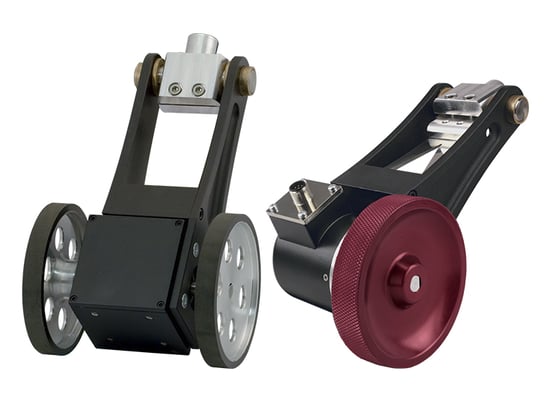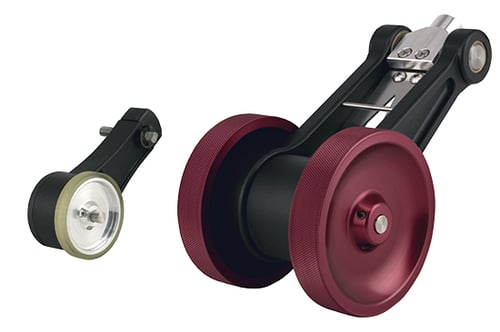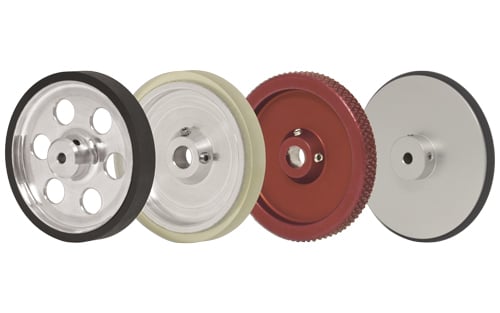Selecting the Proper Measuring Wheel
When selecting a measuring wheel surface, consider these general guidelines:
- Wheel material will expand and contract with temperature variations.
- Wheels wear down with usage.
- A harder wheel surface generally provides greater durability, but less traction.
Encoder Products Company offers numerous measuring wheels in different sizes, all made of high grade aluminum alloy. There are four different contact surfaces available:
Rubber Insert
Rubber provides better traction in most applications, but also may wear faster than other materials, depending on the application. The nature of replaceable O-rings allows easy completion of regularly scheduled maintenance. Rubber insert wheels are good for materials such as (but not limited to): paper, film, foil, hard plastic, and other smooth materials.
Polyurethane
This smooth, versatile material comes in different durometer ratings (that is, degrees of hardness). Polyurethane is good for materials such as (but not limited to): metal pipe, sandpaper, matting, cardboard/packaging, belting, insulated wire, metal, etc.
Knurled Aluminum
Knurled aluminum offers good traction, but should not be used with delicate materials. It is a good choice for materials such as (but not limited to): metal pipe, sandpaper, matting, cardboard/packaging, belting, insulated wire, metal, coarse fabric, cloth tape, rubber, rough wood, carpet, foam, insulation, or other rugged materials that won’t damage easily from constant contact with the wheel.
Hard Anodized Knurled Aluminum
Anodizing hardens the aluminum and prevents corrosion, so these wheels are good for harsh environments where there may be washdown or exposure to corrosive elements. These wheels are also not meant for delicate materials, and are excellent for materials such as (but not limited to): coarse fabric, wood (i.e., lumber cut-to-length), or other durable materials.




